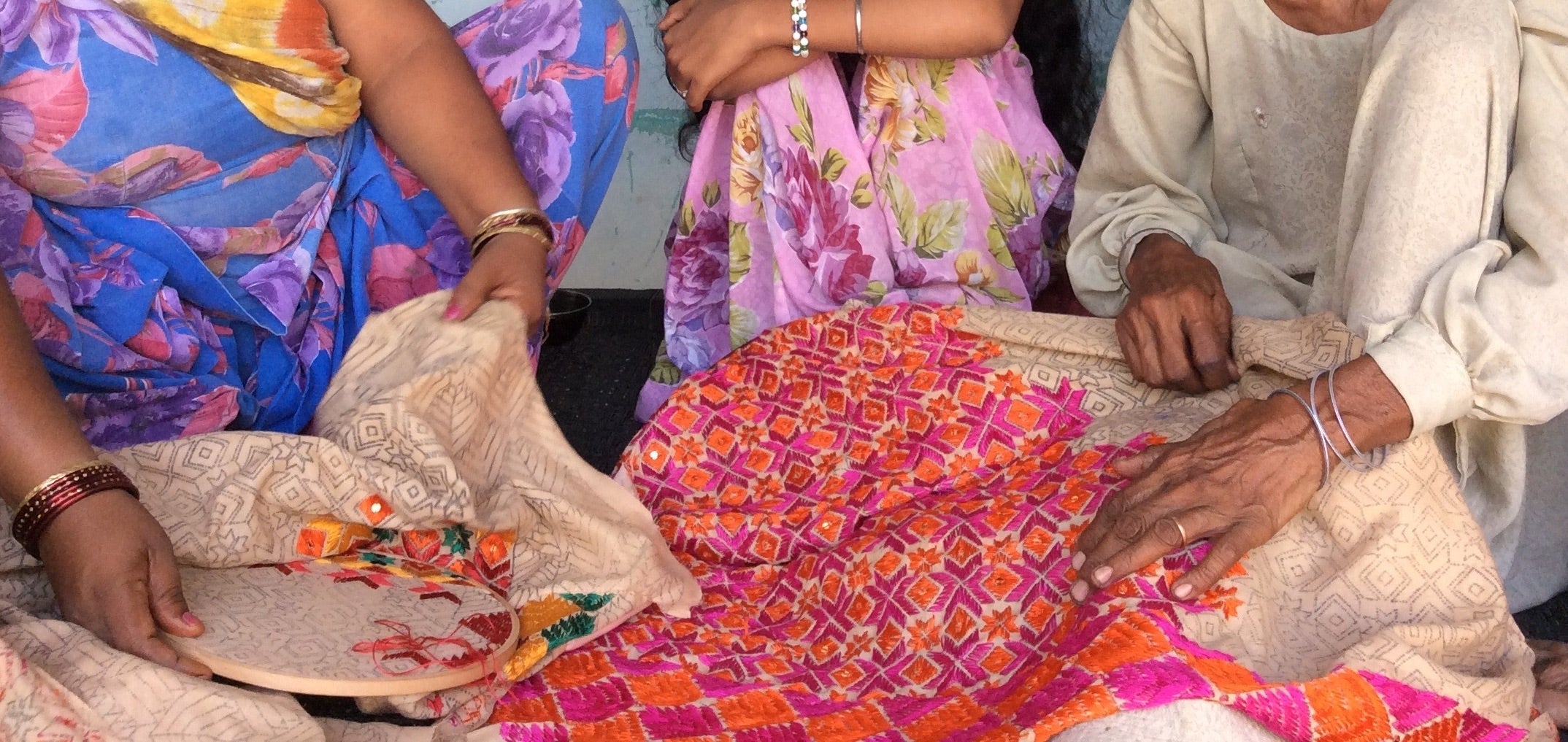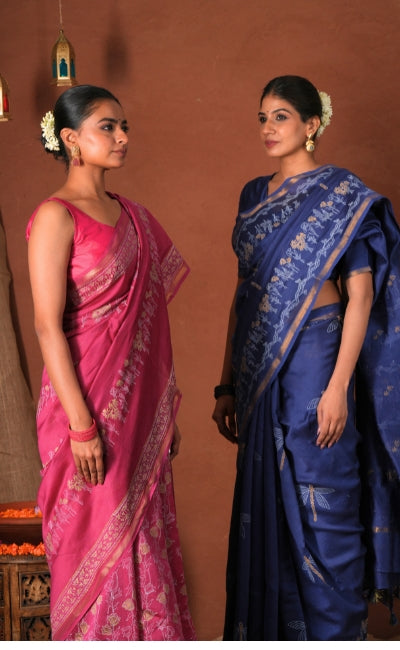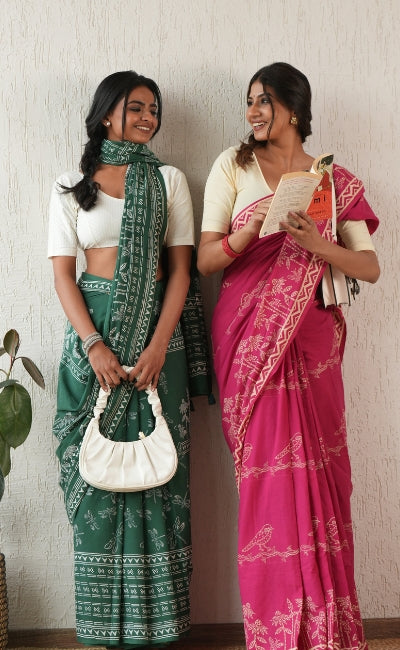Article: The secret of beautifully crafted phulkari dupattas

The secret of beautifully crafted phulkari dupattas
Phulkari is a Punjabi noun that combines two words: Phul, which means flower, and Akari, which indicates shape. Phulkari refers to the shape and orientation of flowers, which represent life. Punjabis thought that having a girl kid in the household was auspicious. When she was born, her mother and grandmother began embroidering Phulkari dupattas because they believed she would create future generations. Phulkari was initially done using real flowers. Because of their purity and endurance. A woman's morality and character formed the Phulkari.
Everything About the Phulkari dupatta!
The origins of Phulkari have been the subject of numerous speculations. According to one theory, this embroidery was popular in various parts of the country as early as the 7th century CE but only survived in Punjab. Motifs similar to those seen in Phulkari are found in Bihar's Kashida and some Rajasthani embroidery. Another theory is that this needlework form originated in Iran, known as Gulkari, which also means floral work. The styles of Phulkari work, on the other hand, are unique from Gulkari work.
"Some people were embroidering flowers and leaves on the fabric from the reverse side," as Phulkari needlework is known in technical terms. However, Phulkari first appeared in Punjabi literature in the 18th century, in Waris Shah's version of Heer Ranjha (a legendary Punjabi tragic romance). The female protagonist Heer's wedding trousseau is described, and many clothing pieces with Phulkari embroidery are included. Flora Annie Steel published the first extensive English publication on Phulkari in 1880, in which she describes the many styles and illustrates the variations in pictures. Phulkari needlework has been famous in its current form since the 15th century. Phulkari's work is distinctive, mainly Punjabi, regardless of its origin.
Phulkari was mainly a product of domestic labor performed by women. Although this embroidery was not done commercially, some found a market outside of the United States. For the Journal of Indian Art, Lockwood Kipling (father of Rudyard Kipling) wrote an article about the Punjab industry. As he puts it, "Since the 1881 Punjab Exhibition, Amritsar has seen a significant increase in business, with women of practically all castes working in the surrounding villages. Industrial and Mission schools have successfully generated Europeanized copies of Phulkari of incredible ugliness. It is possible to argue that the more primitive the district, the better the work ".
These embroideries were employed to construct curtains for European homes, while the ladies of Punjab utilized them to weave shawls or ghaghras. Specimens of Phulkari cloth were sent from several regions of Punjab, primarily Amritsar, Sialkot, Montgomery, Rawalpindi, and Firozpur, to the Colonial and Indian Exhibition conducted under the British government. In Amritsar, there were shops where you could order Phulkari work in any shape or size. Ordinary chaddars costing between Rs 5 and Rs 20 were sold by Devi Sahai and Chambamal or Devi Sahai and Prabhu Dayal.
What Is So Special About Phulkari dupatta - The Floral Work?
Phulkari, and specifically the ladies of Punjab, is the only embroidery for women. Its meaning translates to 'flower work,' and it plays an essential role in the history and culture of its home state, rich in history, rituals, and rites of passage ceremonies. It is more significant than any other Indian needlework, less for commercial reasons and more for the historical insight into women's lives.
Phulkari Dupatta; Sounds Authentic? Let's Find Out
Phulkari Dupatta is a traditional Punjabi needlework embroidery over the fabric. This artwork is crafted in various other forms like sarees, salwar suits, Kurtis, stoles, and juttis are all examples of this art style.
For the minimalist, a phulkari dupatta is ideal. It features bordered pattern embroidery and can be worn with a salwar, long skirt, lehenga, or blacktop, as well as long earrings and bangles. The Phulkari Dupatta style is frequently recommended for a casual or small event.
The difference between Phulkari and Bagh is that the Phulkari cloth is embellished with embroidery and the foundation is visible. In contrast, the Bagh fabric is so densely stitched that the silk threads practically cover the entire ground, and the base is hidden. Bagh is designed for ceremonial occasions.
How Is The Authentic Phulkari Made?
Pat, an untwisted thread silk yarn, is used in phulkari work, often constructed with darn-style stitching on the opposite side of the material. Initially, the embroidery was done on khaddar, a coarse hand-woven textile. Odhani, or long sheets of cloth, were commonly produced by women to wrap their heads and shoulders. Over time, wearing an odhani has been a part of the culture and tradition. The coarse khaddar linen used as a background for the lustrous embroidery work often mirrored the Punjabi women's rough and colorful lives. The women's personalities were graced, delicate, and elegant when they wore polished phulkari.
The Final Take Away about Phulkari Dupattas
Finally, traditional Phulkari is fading from its original shape. The modern Phulkari's quality and longevity as a traditional Punjabi Phulkari have been harmed by its commercialization. It is no longer done for personal or gift purposes. It is currently done for business, with the advantage of Punjabi women. The delight of this country art was transmitted to the cloth through needlework with folk tunes sung. A single individual does not make a phulkari; it results from a group effort. Making Phulkari today is not as time-intensive and detailed as it was in the past. Traditional Phulkari, on the other hand, is more appealing than current Phulkari. The government has attempted to promote the Punjabi Phulkari by arranging specific training programs, fairs, exhibitions, and contests. The positive aspect of this rebirth is that it employs many disadvantaged people, particularly women. Phulkari is now well-known not only in Punjab but also internationally.




